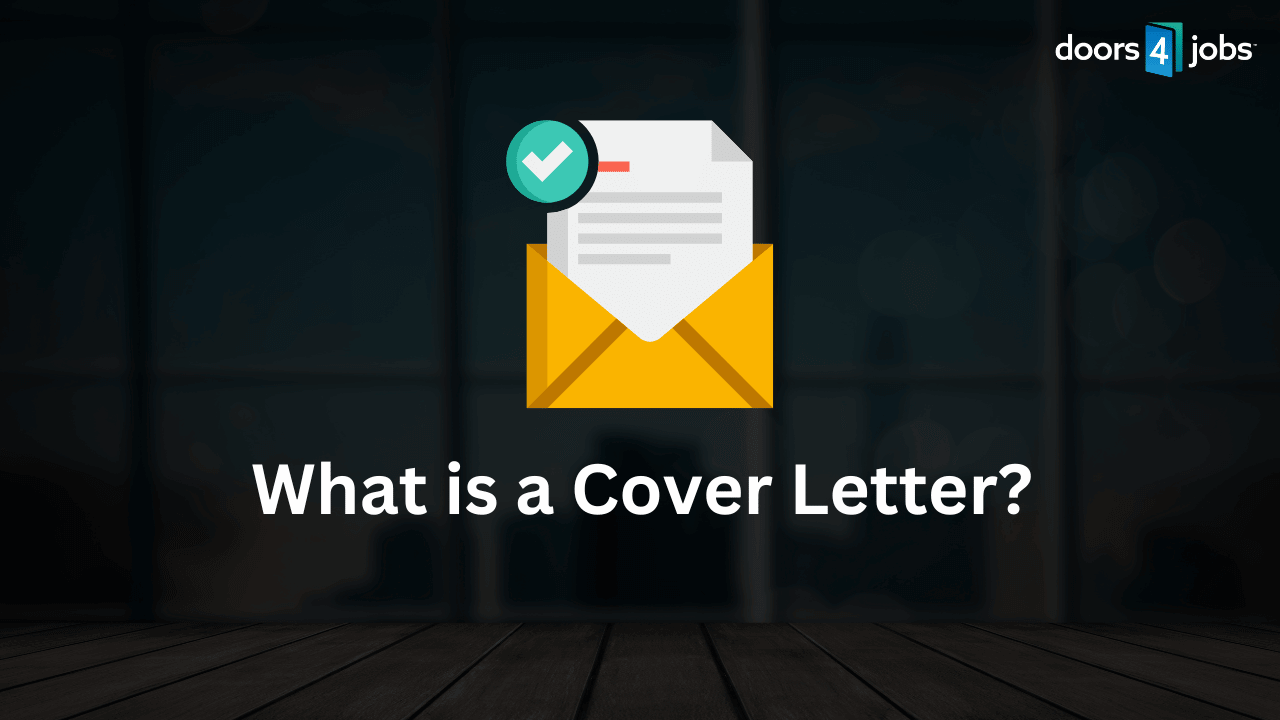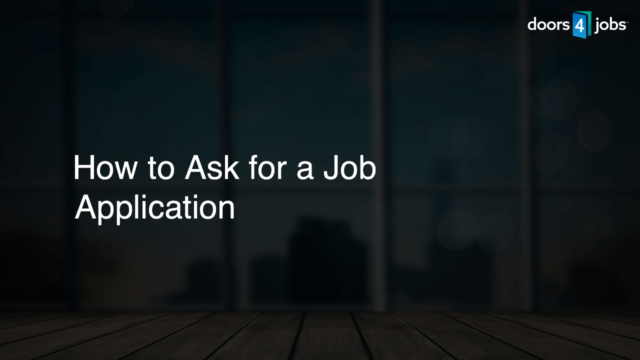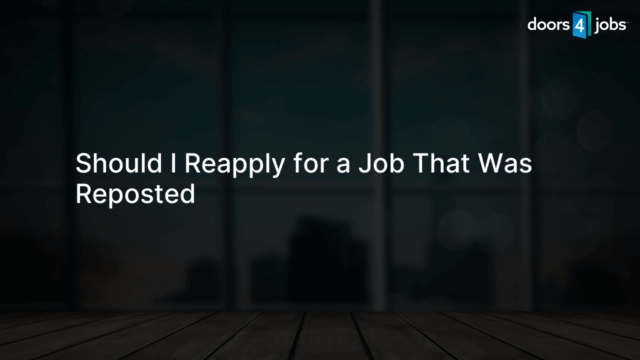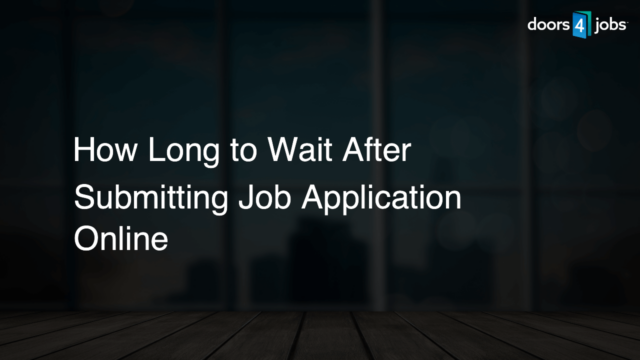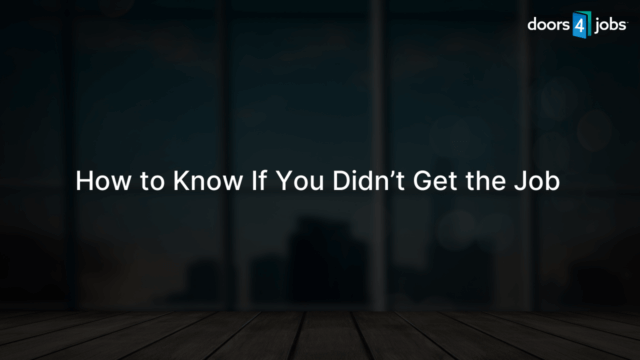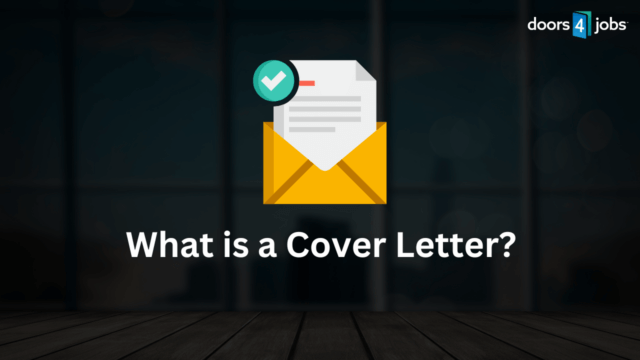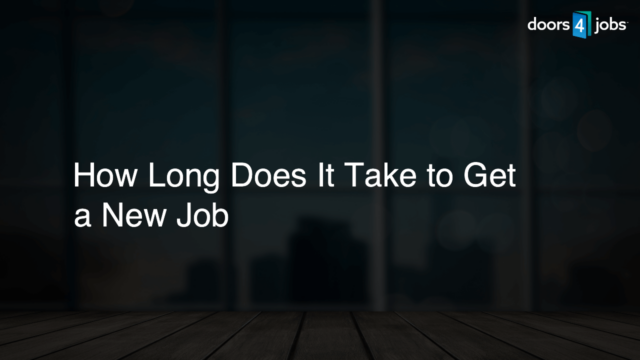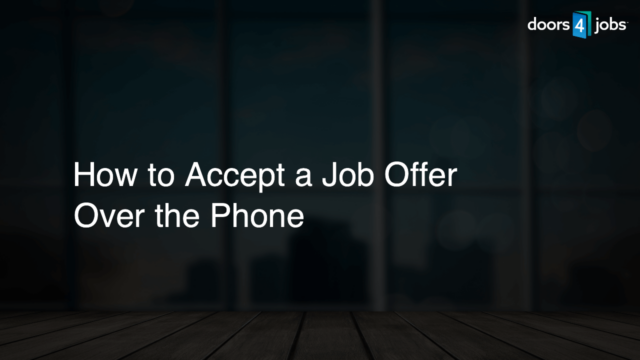What is a Cover Letter for a Job?
A cover letter is a written document that accompanies your resume when applying for a job. Its primary purpose is to introduce yourself, express your interest in the position, and elaborate on why you are a good fit for the role. The cover letter provides potential employers with a glimpse into your personality and highlights relevant experience that might not be evident in your resume.
Why is a Cover Letter Important?
A cover letter is important because it provides a personalized introduction, showcases your genuine interest in the company, offers context to your resume, highlights your soft skills and cultural fit, addresses potential concerns, and demonstrates your communication abilities and initiative.
In essence, it enhances the impact of your resume by weaving a cohesive narrative around your qualifications and experiences, ensuring your application stands out and resonates with the employer.
First Impressions Matter
It’s often said that we don’t get a second chance to make a first impression. In the professional world, this holds even more weight. When you’re on the hunt for a job, hundreds or even thousands of individuals might be vying for the same position. In such a competitive environment, it’s essential to stand out quickly.
Think of your cover letter as the prologue to your professional story. When a hiring manager picks up a resume, they’re presented with facts, figures, and timelines.
But when they read a cover letter, they’re introduced to the story behind those facts. This initial narrative sets the tone for your application. It’s where you can create a powerful and memorable first impression.
Moreover, hiring managers sift through countless applications, so your cover letter needs to be engaging. It should grab their attention and make them want to learn more about you.
By crafting a thoughtful and compelling cover letter, you can ensure that your application doesn’t end up in the ‘no’ pile without a second glance.
Remember, your cover letter isn’t just an attachment—it’s your foot in the door.
Showcases Your Personality
Resumes are structured. They’re bullet points, dates, and concise descriptions. They show a hiring manager where you’ve been and what you’ve done, but not necessarily who you are.
The real you—the one with passions, aspirations, and a unique perspective—isn’t easily captured in such a confined format. That’s where the cover letter shines.
Your cover letter is a canvas on which you can paint a fuller picture of yourself. Here, you can tell a story, share an anecdote, or reveal the passion that drove you to your profession. It’s an opportunity to share why a particular role or company excites you.
Maybe you grew up using a product the company makes, or perhaps their corporate values mirror your own personal beliefs. Such details can genuinely resonate with a hiring manager.
Furthermore, in today’s dynamic workplace, soft skills are increasingly valued. Attributes like adaptability, problem-solving, and collaboration can’t always be quantified on a resume. But they can be illustrated through experiences or scenarios you discuss in your cover letter.
For example, instead of simply stating, “I’m a problem solver,” your cover letter allows you to narrate a time when you faced a significant challenge and how you overcame it.
While your resume displays your qualifications, your cover letter reveals your character.
It’s a testament to the individual behind the credentials, and in many cases, that individual—the one with hopes, experiences, and ambitions—is just who the employer is looking to find.
Demonstrates Your Communication Skills
In today’s digital era, the vast majority of our interactions, both personal and professional, occur online.
Emails, virtual meetings, and digital presentations have become the norm, making clear and effective written communication more crucial than ever.
An individual’s ability to articulate thoughts, ideas, and intentions becomes a foundational skill, often determining the success or failure of business endeavors.
Your cover letter serves as a litmus test for your communication skills. Here’s how:
-
Structure and Flow: A well-organized cover letter demonstrates your ability to prioritize information, leading your reader through a logical progression of ideas. This skill is essential in many professional scenarios, from drafting business proposals to presenting project updates.
-
Clarity and Precision: By being clear and to the point, you show that you respect the reader’s time and can convey ideas without unnecessary jargon or fluff. In the workplace, this clarity can prevent misunderstandings and streamline collaborations.
-
Tone and Style: The tone of your cover letter reveals your awareness of the audience. A good cover letter strikes a balance between professionalism and relatability, mirroring the balance required when communicating with diverse teams, clients, or stakeholders.
-
Attention to Detail: Proofreading your cover letter and ensuring it’s free from typos and grammatical errors highlights your meticulousness, a trait valued in many roles where precision is key.
In essence, your cover letter doesn’t just communicate your interest in a job; it showcases how you communicate. It gives potential employers a preview of what to expect when they collaborate with you on projects, include you in team discussions, or entrust you with client interactions.
Highlights Cultural Fit
More than ever, companies recognize that a harmonious workplace isn’t just about matching skills to job descriptions.
It’s about finding individuals who complement and enhance the existing company culture.
Cultural fit can often be the determining factor in whether an employee thrives and stays long-term or feels disconnected and leaves.
Understanding the nuances of cultural fit:
-
Shared Values and Vision: A company’s culture is often rooted in its values and vision. When an applicant’s personal beliefs align with these, it creates a foundation for mutual growth. Your cover letter is a space to draw parallels between your personal values and the company’s ethos. Maybe the company’s commitment to sustainability matches your own eco-friendly initiatives, or perhaps their focus on innovation aligns with your passion for continuous learning.
-
Adaptability and Team Dynamics: Every company has its rhythms, from daily operations to team dynamics. By sharing experiences or anecdotes in your cover letter that show adaptability or highlight your ability to thrive in diverse team settings, you’re signaling your potential fit within their existing framework.
-
Passion and Drive: Companies appreciate candidates who aren’t just looking for a paycheck but are genuinely excited about their industry or mission. When your cover letter exudes enthusiasm for what the company does and why they do it, it’s an indication that you’re not just looking for any job, but this job at this company.
-
Feedback and Growth: Companies with strong cultures often prioritize feedback and continuous growth. If you can highlight instances where you’ve actively sought feedback or pursued professional development, it shows alignment with cultures that value betterment and evolution.
Cultural fit goes beyond just “getting along” with your colleagues. It’s about shared beliefs, mutual respect, and collective passion. While skills can be taught, cultural fit is intrinsic.
Your cover letter provides a window into how seamlessly you might integrate into not just your role, but the broader tapestry of the company’s ecosystem.
Showcases Research and Initiative
In the vast sea of job applications, standing out is paramount. One of the most effective ways to distinguish yourself is by showcasing genuine interest and commitment to the prospective employer. This isn’t just about professing admiration—it’s about proving it.
Here’s the depth to which your cover letter can reflect research and initiative:
-
Deep Dive into Company Values: Any diligent job seeker can skim through a company’s “About Us” page. But delving deeper into mission statements, core values, or even the history and evolution of the company, and then aligning it with your personal and professional journey, shows a level of dedication that’s hard to fake.
-
Current Events and Achievements: Acknowledging the company’s recent milestones, be it an award, a new product launch, or even a positive news feature, and expressing genuine excitement or admiration for it, signals that you’re not just living in the past but are attuned to the company’s current achievements and future trajectory.
-
Specific Role-related Insight: Demonstrating a clear understanding of the role you’re applying for, beyond the job description, and possibly suggesting how you envision contributing or innovating, showcases not only research but foresight.
-
Industry Awareness: Besides knowing about the company, understanding its position in the broader industry context—competitors, challenges, trends—indicates a holistic perspective. This can be particularly impressive, especially for roles that demand strategic thinking or market awareness.
In essence, when your cover letter is sprinkled with specifics—names of company initiatives, dates of significant achievements, references to industry trends—it becomes evident that you’re genuinely invested.
This proactive approach, this show of initiative, is often a breath of fresh air for hiring managers tired of generic applications.
Clarifies Potential Concerns
Everyone’s professional journey is unique, often filled with highs, lows, turns, and detours. While a resume states facts, it doesn’t always narrate the story behind them. The cover letter is your chance to fill in the blanks and provide valuable context.
How a cover letter can address and alleviate potential concerns:
-
Explaining Gaps: Life happens. Whether you took time off for personal reasons, pursued further education, traveled, or even faced unforeseen circumstances like health issues, it’s essential to be upfront. Briefly explaining the reason for an employment gap and emphasizing what you learned or how you grew during that time can turn a potential red flag into a testament to your resilience or commitment to personal development.
-
Highlighting Transitions: If you’re shifting industries or roles, it might not be immediately evident why. Your cover letter can weave the narrative thread that connects your past experiences with your future aspirations. Perhaps the skills you acquired in a seemingly unrelated role are surprisingly relevant, or maybe a personal passion led you to explore a new field. Sharing this journey can provide clarity and demonstrate intentional decision-making.
-
Addressing Short Tenures: If you’ve hopped jobs frequently in a short period, it might raise concerns about your stability or commitment. By offering insights into the reasons—maybe you were seeking the right cultural fit, or perhaps external circumstances dictated the moves—you can dispel potential misconceptions.
-
Reassuring Over Qualifications: Sometimes, you might be applying for a position for which you seem overqualified. Addressing this proactively, by sharing why you’re enthusiastic about the role and how you see it aligning with your career goals, can reassure employers that you’re not just settling but are genuinely interested.
Every concern or question that a hiring manager might have is essentially a narrative gap. Your cover letter is the tool that allows you to fill these gaps, to connect the dots in a way that your resume can’t.
By addressing potential concerns upfront, you not only exhibit transparency but also take control of your narrative, guiding the reader’s perception in a positive direction.
Enhances the Impact of Your Resume
The dynamics between a resume and a cover letter can be likened to the relationship between facts and storytelling.
While the resume lists down the chapters of your professional life, the cover letter crafts these into a compelling story, imbuing life, character, and context into otherwise static data points.
Let’s delve deeper into how the cover letter amplifies the impact of your resume:
-
Providing the “Why” Behind the “What”: Resumes often answer the “what” – what did you do, what roles did you hold, what were your achievements. But the “why” – why did you choose that role, why did you transition to a different industry, why are you particularly proud of certain accomplishments – that’s where the cover letter shines. By understanding your motivations and choices, employers can gauge your passion, values, and foresight.
-
Emphasizing the Journey, Not Just Milestones: A series of job titles, companies, and dates might show progression, but they don’t always reflect challenges overcome, skills honed, or personal growth experienced along the way. Your cover letter can highlight the moments between these milestones, offering a panoramic view of your professional journey.
-
Humanizing the Applicant: Resumes, by their nature, are formal and fact-based. They don’t convey the enthusiasm in your voice when you talk about a project you led, the pride in an unconventional solution you devised, or the perseverance through a challenging phase. Through personal anecdotes, reflections, or aspirations shared in your cover letter, you become more than just bullet points – you become a relatable individual.
-
Aligning with the Company’s Future: While your resume reflects your past, your cover letter can be forward-looking. It’s the space where you can articulate how your past experiences have equipped you for the specific role you’re applying for and how you envision contributing to the company’s future.
-
Showcasing Additional Qualities: Soft skills, like teamwork, adaptability, and problem-solving, are sometimes challenging to convey through a resume. But a cover letter, through stories or examples, can effectively highlight these attributes. For instance, recounting a time when you led a project under tight deadlines can subtly highlight your leadership, time management, and stress-handling skills.
In essence, the cover letter complements the resume, much like a voiceover complements a documentary. While the resume lays out the scenes, the cover letter provides the narration, offering insights, evoking emotions, and creating a holistic picture that’s both engaging and enlightening. Together, they ensure that your application is not just skimmed but truly understood and remembered.
How to Write a Cover Letter. What to Include in a Cover Letter. 6 Key Components of a Cover Letter
Crafting an effective cover letter is akin to assembling a puzzle; each piece, when perfectly placed, paints a cohesive and compelling picture of you as a candidate. Let’s delve deeper into the essential components that make up a standout cover letter.
1. Header: The Foundation of Professionalism
The header sets the tone, reflecting your attention to detail and professionalism. Here’s what to ensure:
- Name: Use the same font and style as your resume for consistency.
- Address: Your current residential address.
- Phone Number: Ensure it’s a number where you can be readily reached.
- Professional Email Address: Ideally, an email that incorporates your full name without any frivolous additions.
- Date: This is essential to show your application’s timeliness.
- Company’s Contact Information: Include the name of the company, the department (if known), the hiring manager’s name (if known), and the company’s address.
2. Salutation: Personalization Matters
Generic greetings can seem impersonal. Making the effort to address the hiring manager by name shows initiative and respect.
- Finding the Name: If not listed in the job posting, consider checking the company’s website, LinkedIn, or even calling the company’s HR department.
- If Name is Unknown: Opt for something more specific, like “Dear Hiring Team” or “Dear [Department Name] Team,” as opposed to the impersonal “To Whom It May Concern.”
3. Introduction: Capturing Attention
Your introductory lines are your first impression. They should not only hook the reader but also provide a glimpse into your enthusiasm and commitment.
- Compelling First Line: Instead of simply stating the position you’re applying for, consider mentioning a unique trait of the company or how your passion aligns with the role.
- Source of Job Listing: Whether it was a job board, company website, or referral, briefly mention it to offer context.
4. Body: Showcasing Your Value
This section is the heart of your cover letter. It’s your space to convince the employer of your suitability for the role.
- Why You’re a Good Fit: Instead of merely restating your resume, offer insights. Narrate a brief story or experience that showcases how you’ve applied a specific skill or knowledge pertinent to the job.
- What You Bring to the Table: Beyond job-specific skills, highlight attributes that make you unique. Maybe it’s your multicultural exposure, interdisciplinary knowledge, or a specific achievement not directly related to the job but indicative of your drive.
- Your Knowledge of the Company: Rather than generic statements, pinpoint particular initiatives, values, or milestones of the company that excites you. Relate these back to your experience or aspirations to demonstrate alignment.
5. Conclusion: Leaving a Lasting Impression
Your concluding remarks should reinforce your enthusiasm and leave the reader with a clear action point.
- Gratitude: A simple thank you goes a long way in showing humility and appreciation.
- Forward-looking Statement: Express your eagerness to continue the conversation, be it through an interview or another form of discussion.
- Reiteration of Contact Details: By placing your contact information again, you emphasize your openness and availability.
6. Signature: Sealing with Professionalism
The manner in which you conclude your letter conveys your professionalism.
- Professional Sign-off: Phrases like “Sincerely,” “Warm regards,” and “Best regards” are universally accepted and preferred.
- Handwritten vs. Typed: If sending a physical letter, a handwritten signature adds a personal touch. For digital submissions, a typed name suffices, but consider using digital signature tools for an added layer of professionalism.
Every component of your cover letter serves a distinct purpose, and together, they craft a narrative that complements your resume, making your application memorable and impactful. Proper attention to each section can mean the difference between a letter that’s glanced over and one that resonates deeply with the reader.
How Long Should a Cover Letter Be
A cover letter’s primary objective is to provide a snapshot of your qualifications and enthusiasm for the role while respecting the hiring manager’s time. Strive to keep it to a single page in length. Adhere to these guidelines:
-
Paragraph Count: Limit yourself to three to four meaningful paragraphs. The aim is to be detailed but direct, conveying only the essential information.
-
Word Count: Aim for 250 to 400 words. This range ensures you cover all necessary points without overwhelming the reader.
-
Content Balance: Your introduction and conclusion should be concise, with the bulk of the word count dedicated to the body, where you discuss your fit, experiences, and knowledge about the company.
-
Brevity vs. Substance: While being succinct is key, ensure each sentence adds value. Avoid fluff and focus on substance, showcasing how you align with the job’s requirements and the company’s ethos.
By adhering to these guidelines, your cover letter will be long enough to impart key details but short enough to retain the hiring manager’s interest.
How to Address a Cover Letter
Addressing your cover letter correctly sets a tone of professionalism and shows your attention to detail. Here’s a structured approach to getting it right:
- Personalize with a Name: Whenever possible, research to find the hiring manager’s name. Websites, company directories, or LinkedIn are excellent tools. Using the specific name adds a personal touch and shows initiative.
- Gender-Neutral Titles: If you’re unsure of the hiring manager’s gender, avoid using “Mr.” or “Mrs.” Instead, use their full name, like “Jordan Smith.”
- Alternative Salutations: If a specific name eludes your research, default to role-based titles. Common choices include “Dear Hiring Manager,” “Dear Recruitment Team,” or “Dear [Job Role] Selection Committee.”
- Avoiding Generic Greetings: Phrases like “To Whom It May Concern” or “Dear Sir/Madam” are outdated and impersonal. Whenever possible, opt for a title that’s more tailored to the company or role.
- Reaching Out: If you’re truly keen on a position, consider calling the company’s HR department to inquire about the hiring manager’s name. It’s an extra step, but it underscores your genuine interest in the position.
In all cases, your goal is to convey respect and interest, demonstrating that you’ve made the effort to address your application directly to the relevant individual or team.
What to Include in a Cover Letter
A well-crafted cover letter acts as your personal introduction, showcasing your fit for the role and the value you’d bring. To ensure you effectively communicate this, follow this detailed breakdown of key elements:
-
Personalized Greeting: Begin with a tailored salutation. If you’ve identified the hiring manager’s name, use it. Otherwise, opt for role-specific titles that convey your understanding of the company structure.
-
Introduction:
- Opening Line: Craft a compelling start that instantly captures attention. Mention the specific role you’re applying for and, if applicable, where you found the job listing.
- Brief Overview: Provide a snapshot of who you are and what makes you an ideal candidate for the role.
-
Body: This section can be one or multiple paragraphs, focusing on:
- Relevant Experience: Highlight past roles or projects that align with the job’s requirements.
- Unique Attributes: Discuss qualities or experiences that differentiate you, ensuring you’re not just rehashing your resume.
- Knowledge of the Company: Indicate your familiarity with the company’s operations, culture, or recent news. This shows initiative and genuine interest.
-
Conclusion:
- Express Gratitude: Thank the hiring manager for their time and consideration.
- Call to Action: Express your desire for a follow-up conversation or interview to discuss your qualifications further.
- Reiteration: Briefly re-emphasize your enthusiasm for the role and the value you’d bring.
-
Contact Details: Always ensure the hiring manager can easily contact you. Place your phone number and professional email address prominently, even if they’re also in the header.
A thoughtfully structured cover letter that hits on these key components will effectively convey your professionalism, enthusiasm, and fit for the role, setting you apart from other candidates.
How to End a Cover Letter
The conclusion of your cover letter is your final chance to leave a lasting impression. Here’s a step-by-step guide on crafting a memorable and impactful sign-off:
-
Express Gratitude: Always begin the concluding section by thanking the hiring manager or recruiter for their time and consideration. This shows appreciation and courtesy.
-
Reiterate Enthusiasm: Briefly remind the reader of your eagerness for the position. This can be a succinct statement like, “I am genuinely excited about the possibility of bringing my skills to [Company Name].”
-
Call to Action: Politely express your hope for a follow-up or next steps. For instance, “I’d welcome an opportunity to further discuss how I can contribute to your team.”
-
Professional Sign-off: Choose a formal yet warm closing. “Sincerely,” “Best regards,” and “Warm regards” are universally accepted. Avoid overly casual or overly elaborate closings.
-
Your Name: After the sign-off, skip a line and type your full name. If submitting a printed or physical letter, leave space above your typed name for your handwritten signature.
By ensuring a polished ending to your cover letter, you solidify your professional image and leave the reader with a positive, lasting memory of your application.
How to Format a Cover Letter
A well-formatted cover letter demonstrates your attention to detail and professionalism. Ensure your letter is not just content-rich but also aesthetically pleasing and easy to read by following these guidelines:
-
Font Selection: Choose a standard, professional font such as Times New Roman, Arial, or Calibri. The font size should typically be between 10 to 12 points, ensuring readability.
-
Margins and Spacing: Use consistent margins around your document, ideally set to 1 inch on all sides. For spacing, use single-line spacing within paragraphs and double-line spacing between sections or paragraphs for clarity.
-
Header: At the top, include your contact information – name, address (optional in some cases), phone number, and a professional email address. Beneath this, place the date, followed by the employer’s contact information.
-
Sections and Headings: Clearly delineate each section using headings or clear breaks. This includes the salutation, introduction, body, and conclusion.
-
Bullet Points: When detailing relevant experiences or achievements, consider using bullet points for easy readability. However, use them sparingly to maintain a balanced look.
-
Length: While content is critical, aim for a one-page cover letter to maintain the reader’s interest.
-
File Format: If sending electronically (which is common nowadays), save and send your cover letter as a PDF. This ensures the formatting remains consistent, regardless of the software or device used to view it.
-
Professionalism: Avoid using colorful fonts or flashy graphics. Stick to a clean, neutral look. Any emphasis within the text (like for headings) can be achieved using bold or italics.
-
Alignment: Generally, left-aligned text is standard and looks the neatest. This includes your contact information, the date, the employer’s contact details, and the body content.
Following these formatting tips ensures that your cover letter is both visually appealing and optimized for readability, making it easier for hiring managers to focus on your qualifications and the value you’d bring to the position.
How to Write a Cover Letter for an Internship
Crafting a cover letter for an internship may seem daunting, especially if you lack substantial work experience. However, by emphasizing your academic achievements, demonstrating genuine interest, and showcasing transferable skills, you can present a compelling case for yourself. Here’s a breakdown on how to structure and compose it:
-
Start Strong with Enthusiasm: Open with a line about your genuine excitement for both the industry and the specific company you’re applying to. Mentioning a particular aspect or recent news about the company can show that your interest is well-researched.
-
Introduce Yourself: Briefly state your current educational standing, major, and the type of internship you’re seeking.
-
Highlight Academic Achievements: Elaborate on relevant courses you’ve taken that have equipped you with knowledge pertinent to the industry. Mention any outstanding grades, honors, or specific projects that showcase your dedication and capability.
-
Showcase Extracurriculars: Discuss clubs, organizations, or extracurricular activities you’re involved in, especially if they’re related to the industry. This can demonstrate not only your passion but also that you’re proactive in seeking out related experiences.
-
Transferable Skills: Perhaps you’ve held positions in student organizations, volunteered, or had unrelated part-time jobs. Extract and highlight transferable skills from these experiences, such as teamwork, leadership, project management, communication, or problem-solving.
-
Eagerness to Learn: Employers know that interns are there primarily to learn. Emphasize your eagerness to gain real-world experience, absorb new knowledge, and positively contribute to the company.
-
End on a Forward-Looking Note: Conclude by reiterating your excitement for the potential opportunity and express hope for a chance to discuss how you can contribute, even in a learning capacity.
-
Formatting: Since it’s an internship application, it’s understandable if it’s slightly shorter than a typical job cover letter. Still, maintain a professional format with a clear introduction, body, and conclusion.
Remember, the goal of the cover letter for an internship is to highlight how your academic background, passions, and previous experiences make you a suitable fit for the internship, even if you don’t have an extensive work history in the field.
How to Address a Cover Letter Without a Name
Addressing a cover letter without a specific name can be challenging, but it’s essential to remain as professional as possible. Here’s a guideline to help you navigate this situation:
-
Attempt to Find the Name: Before defaulting to a generic salutation, make an effort to find the name. Look at the company’s website, LinkedIn, or even call the company’s HR department to inquire.
-
Use a Neutral, Professional Greeting: If your efforts don’t yield a name, it’s advisable to use neutral, inclusive greetings. Options include:
- “Dear Hiring Manager”
- “Dear Recruitment Team”
- “Dear [Department Name] Team” (e.g., “Dear Marketing Team”)
- “To the Hiring Committee”
-
Avoid Overly Generic or Impersonal Salutations: Phrases like “To Whom It May Concern” or “Dear Sir/Madam” are outdated and can come off as impersonal. It’s better to target the hiring or recruitment aspect of the company.
-
Stay Respectful and Formal: Even in the absence of a name, the tone of your greeting (and entire cover letter) should remain respectful and formal, setting a professional tone from the outset.
-
Focus on Content: While the greeting is important, investing time in the content of your cover letter is crucial. Ensure that the body of the letter effectively communicates your qualifications, passion, and suitability for the role.
Remember, while personalization is ideal, companies understand that applicants might not always have access to specific names. It’s how you address the situation and the content that follows that will make a lasting impression.
Is a Cover Letter Necessary
In today’s evolving job market, the question arises: Is a cover letter truly necessary? Here’s a deeper dive into the significance and context of the cover letter:
-
It’s About Presentation: Think of a cover letter as the packaging for your resume. Just as attractive packaging can make a product more appealing, a well-crafted cover letter can enhance the presentation of your credentials.
-
Personalization: Unlike the standardized format of a resume, a cover letter offers a chance to speak directly to the hiring manager. It allows you to express your enthusiasm for the role and company, and to explain in your own words why you’re the perfect fit.
-
Expanding Beyond the Resume: Resumes are factual and to the point, leaving little room for context or narrative. A cover letter lets you weave a story, addressing gaps in employment, transitions, or other elements that deserve an explanation.
-
When It’s Explicitly Requested: If a job posting specifically asks for a cover letter, omitting it can be detrimental. In such cases, not including one could signal a lack of attention to detail or suggest you aren’t fully invested in the application process.
-
Differentiate Yourself: Especially for roles with numerous applicants, a cover letter can set you apart. It’s an additional platform to display your commitment, passion, and communication skills.
-
Industry Norms: In some sectors, especially more traditional ones, cover letters are expected. However, in tech startups or more casual industries, the importance may be diminished.
-
Digital Platforms: With the rise of platforms like LinkedIn, some argue that the cover letter’s significance is waning. However, even on these platforms, a personalized note or message can function as a mini cover letter.
While the necessity of a cover letter might vary based on the job, industry, or employer’s preferences, it’s an opportunity. It’s a chance to make a memorable impression, add depth to your application, and further your case as the best candidate for the role.
How to Write a Cover Letter with No Experience
Stepping into the professional world with minimal or no experience can be daunting, but everyone starts somewhere. A well-crafted cover letter can bridge the experience gap and make a compelling case for your candidacy. Here’s a comprehensive guide on how to approach it:
-
Start Strong with Your Introduction: Begin by expressing genuine interest in the position and the company. Mention where you found the job listing and why the role caught your attention.
-
Highlight Academic Achievements: If you’re a recent graduate, your academic achievements can take center stage. Discuss relevant coursework, projects, or any distinctions you’ve earned that align with the job’s requirements.
-
Showcase Transferable Skills: Even without direct job experience, you’ve acquired skills from school, extracurricular activities, or daily life that can be applied in a professional setting. Skills such as teamwork, leadership, time management, problem-solving, and communication are universally valued.
-
Emphasize Volunteer Work and Internships: Any volunteer work, internships, or even group projects can be a testament to your work ethic and ability to contribute to a larger mission. Describe your roles, responsibilities, and any impactful outcomes.
-
Express Eagerness to Learn: Employers value candidates who are quick learners and eager to take on new challenges. Make it clear you’re hungry for growth and ready to acquire the skills needed for the role.
-
Demonstrate Cultural Fit: Research the company’s values and culture. Share personal values or experiences that resonate with their mission. This not only shows your initiative but also how you could seamlessly integrate into their team.
-
Address the Experience Gap Head-On: Rather than avoiding the topic, address your lack of experience transparently, framing it as an asset. Being new to the field can mean you bring fresh perspectives, free of industry biases.
-
Conclude Confidently: Reiterate your excitement for the role, express gratitude for the reader’s time, and share your hope for further discussion about how you can contribute, despite the lack of traditional experience.
-
Proofread and Format: As always, ensure that your cover letter is free of errors and is presented in a clear, professional format. This shows your attention to detail—a crucial skill regardless of experience level.
In essence, when crafting a cover letter with no experience, it’s all about positioning. Spin the narrative to focus on your potential, adaptability, and the unique qualities you bring to the table. Everyone has a starting point; it’s how you present that beginning that makes all the difference.
Cover Letter Examples and Templates You Can Use to Apply for a Job
Example 1: Comprehensive Cover Letter for a Corporate Position
This template provides a solid foundation that can be tailored to specific jobs and industries. Personalizing and tweaking it according to the nuances of each position and company will ensure it resonates authentically with the reader.
{Your Full Name}
{Your Address}
{City, State, Zip Code}
{Your Phone Number}
{Your Professional Email Address}
{Date}
{Recipient’s Full Name / Hiring Manager’s Name}
{Company’s Name}
{Company’s Address}
{City, State, Zip Code}
Dear {Recipient’s Name / Hiring Manager’s Name},
Introduction
I was excited to discover the opening for {Specific Job Title} on {where you found the job listing, e.g., “the company website”}. Being deeply passionate about {specific trait or feature of the company}, I am eager to contribute my skills and experiences to the {Company’s Name} team.
Why I’m a Good Fit
Throughout my tenure at {Previous Company/Position}, I was able to {specific experience or achievement that aligns with the job description, e.g., “lead a team of designers in launching a product that received industry accolades”}. My background in {specific skills or experiences relevant to the job, e.g., “product design and user experience”} positions me to make meaningful contributions to the role.
What I Bring to the Table
Beyond my technical skills, my experiences have equipped me with {unique attributes or experiences that differentiate you, e.g., “a keen eye for emerging market trends and an interdisciplinary approach to design”}. During a challenging phase at {a situation or context}, I demonstrated {a particular skill or trait, e.g., “resilience and adaptability”}, ensuring that we met our deliverables ahead of schedule.
My Knowledge of {Company’s Name}
I’ve been particularly impressed by {Company’s specific initiative, project, or value, e.g., “your sustainable design initiatives and commitment to community engagement”}. These resonate deeply with my professional ethos. I am eager to contribute to and further such initiatives, aligning my growth with the larger vision of {Company’s Name}.
Conclusion
Thank you for considering my application. I am looking forward to the opportunity to delve deeper into how my skills and experiences align with {Company’s Name}’s needs. Please feel free to reach out to me at {Your Phone Number} or {Your Email Address} for any further discussions.
Warm regards,
{Your Handwritten Signature (if a physical letter)}
{Your Typed Full Name}
Example 2: Engaging Cover Letter for a Creative Role
This template infuses a bit more personality and creativity, making it apt for roles that value individual expression and innovative thinking. Adapting the specifics to align with each job and company will make it even more compelling.
{Your Full Name}
{Your Address}
{City, State, Zip Code}
{Your Phone Number}
{Your Professional Email Address}
{Date}
{Recipient’s Full Name / Hiring Manager’s Name}
{Company’s Name}
{Company’s Address}
{City, State, Zip Code}
Hello {Recipient’s Name / Hiring Manager’s Name},
The Spark Behind My Interest
While scrolling through {where you found the job listing, e.g., “your vibrant Instagram feed”}, I stumbled upon the opening for the {Specific Job Title} role. As someone who believes in {a personal creative philosophy or value, e.g., “telling impactful stories through visual content”}, I instantly felt a connection with {Company’s Name}’s work.
My Creative Journey
At {Previous Company/Position}, I spearheaded {specific project or initiative, e.g., “a multimedia campaign that achieved 2 million organic impressions”}. This experience honed my {specific skills or techniques, e.g., “video editing, scriptwriting, and audience engagement”} abilities, all of which I’m excited to bring to {Company’s Name}.
What Sets Me Apart
Creativity, for me, is about {unique perspective on creativity, e.g., “pushing boundaries and sparking conversations”}. During {a specific project or time, e.g., “the launch of our crowd-sourced content series”}, I championed {a unique approach or idea, e.g., “diverse voices, ensuring representation across all content”}, reflecting my commitment to inclusive creativity.
Why {Company’s Name} Resonates with Me
Your recent {specific project, campaign, or feature of the company, e.g., “social justice-themed campaign”} not only caught my eye but also echoed my personal and professional values. It’s evident that {Company’s Name} doesn’t just create content; it crafts narratives with intention, something I deeply resonate with.
Wrapping Up
I’m thrilled about the prospect of weaving stories and crafting impactful content alongside the talented team at {Company’s Name}. For a deeper dive into my portfolio or to chat about the latest industry trends, drop me a line at {Your Phone Number} or {Your Email Address}.
Cheers to creativity,
{Your Handwritten Signature (if a physical letter)}
{Your Typed Full Name}
Common Mistakes to Avoid When Writing a Cover Letter
Crafting the perfect cover letter is both an art and a science. While it serves as a platform to showcase your qualifications and enthusiasm for a role, it’s also riddled with pitfalls that can sabotage your application.
Even experienced job seekers can inadvertently make errors that cast a shadow on their suitability.
Whether you’re a first-time applicant or a seasoned professional, steering clear of these common mistakes can greatly elevate the impact of your cover letter and increase your chances of catching the hiring manager’s eye.
1. Vagueness
- Why It’s an Issue: Generic statements can make you blend in with the crowd, rather than stand out. They can make your application feel insincere or rushed.
- Solution: Instead of saying, “I’m a great team player,” provide a specific example of when you collaborated with a team to achieve a particular result. Ground your claims in concrete instances.
2. Being Overly Formal
- Why It’s an Issue: While a degree of formality demonstrates respect, being excessively formal can come off as distant or insincere.
- Solution: Use a natural tone. Imagine you’re speaking to the hiring manager in person. While maintaining professionalism, it’s okay to let your genuine enthusiasm and personality shine through.
3. Rehashing Your Resume
- Why It’s an Issue: The hiring manager already has your resume. Using your cover letter to repeat the same information wastes a valuable opportunity to share more about yourself.
- Solution: Dive deeper into experiences that are relevant to the job. Share anecdotes or insights that provide context to your resume, or introduce new, relevant information.
4. Typos and Grammatical Errors
- Why It’s an Issue: Such mistakes can signal a lack of attention to detail and give the impression that you didn’t take the application process seriously.
- Solution: Proofread multiple times. Use tools like grammar checkers, but also have someone else review your letter. A fresh pair of eyes can catch errors you might have overlooked.
5. Overconfidence or Underselling
- Why It’s an Issue: While it’s good to be confident, coming off as arrogant can be off-putting. Conversely, being too modest can make it seem like you’re not convinced of your own qualifications.
- Solution: Strive for balance. Highlight your accomplishments without overshadowing the potential contributions of others. Recognize your strengths, but also express eagerness to learn and grow.
6. Lack of Customization
- Why It’s an Issue: Using a one-size-fits-all cover letter can make it apparent that you didn’t tailor your application to the specific role or company.
- Solution: Always customize your cover letter for each job application. Mention specific details about the company and how your skills and experiences align with their needs.
7. Lengthy Cover Letters
- Why It’s an Issue: If a cover letter is too long, there’s a risk the hiring manager won’t read it in its entirety.
- Solution: Keep your cover letter concise. Aim for a single page, focusing on the most relevant and compelling details.
By avoiding these pitfalls, you can craft a cover letter that’s polished, compelling and stands out in a sea of applications.
Tips for Making Your Cover Letter Stand Out
In the competitive landscape of job applications, your cover letter is a golden opportunity to make a memorable impression. While most candidates understand the basics of crafting a cover letter, standing out requires more than just ticking boxes.
It’s about striking a balance between professionalism and personality and positioning yourself not just as a candidate, but as a valuable asset. Dive into these curated tips to ensure your cover letter doesn’t just blend in but truly shines.
1. Tailor It for Every Job
- Deep Dive: It’s tempting to use a one-size-fits-all approach, especially when applying for multiple jobs. However, hiring managers can easily spot generic letters. A tailored letter demonstrates your genuine interest in the specific role and company.
- Pro Tip: Research the company’s goals, projects, and culture. Incorporate your findings subtly into your cover letter, showing that you’re aligned with their mission.
2. Keep It Concise
- Deep Dive: While it’s essential to convey all the necessary information, a lengthy cover letter might lose the reader’s interest. Clarity and brevity ensure your main points are received without overwhelming the hiring manager.
- Pro Tip: Focus on the most compelling and relevant aspects of your experience. If you find the letter running long, revisit and trim down or merge similar points.
3. Use Action Words
- Deep Dive: Action verbs give life to your experiences, portraying you as an active and impactful contributor rather than a passive participant in your past roles.
- Pro Tip: Instead of just listing tasks, showcase them with action words. For instance, instead of “responsible for sales,” try “boosted sales by 20% through targeted strategies.”
4. Add Testimonials
- Deep Dive: Third-party endorsements can greatly amplify the impact of your claims. They offer external validation of your skills and achievements.
- Pro Tip: When incorporating a testimonial, keep it short and relevant. For instance, “Jane Doe, my former supervisor at XYZ Corp, once said, ‘Your ability to manage complex projects greatly benefited our team.'”
5. Inject Personality While Remaining Professional
- Deep Dive: While the content is paramount, the tone and style of your letter also matter. A touch of personality can make you memorable, but it’s crucial not to stray too far from a professional demeanor.
- Pro Tip: Share a brief anecdote or passion that aligns with the company’s values or the job’s requirements, but always keep the overall tone respectful and professional.
6. Highlight Alignment with Company Values
- Deep Dive: Companies are not just looking for skills; they want individuals who share their ethos and values.
- Pro Tip: Spend some time on the company’s website, especially on pages like “About Us” or “Company Values.” Use insights from these pages to highlight alignment between your values and theirs.
7. Opt for a Clean and Professional Format
- Deep Dive: Presentation matters. A well-formatted cover letter not only looks appealing but also makes it easier for the hiring manager to follow your narrative.
- Pro Tip: Use consistent fonts and spacing. Add clear headers and bullet points where necessary. If submitting electronically, save your cover letter in a widely accessible format like PDF.
Employing these strategies will not only enhance the quality of your cover letter but also distinguish you in a competitive job market. Each tip serves to showcase your dedication, expertise, and fit for the role, all crucial elements in a successful job application.
Final Thoughts: Mastering the Art of the Cover Letter
Crafting an effective cover letter is both an art and a science. It serves as your personal pitch, giving potential employers insight into who you are beyond just your professional achievements.
By tailoring your letter to each job, avoiding common pitfalls, and ensuring it complements your resume, you significantly increase your chances of landing that interview.
Remember, every opportunity to communicate with a potential employer is a chance to showcase your value. Make every word count!
